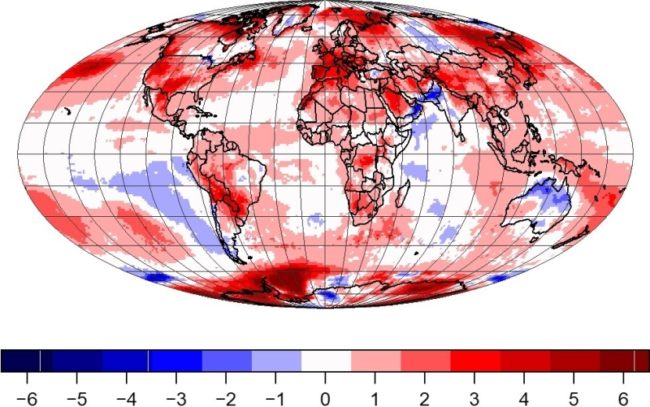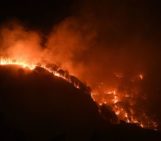
This year, like in the last few years, we are experiencing the effects of global heating in increasingly personal ways. The summer of 2022 exposed us to ever more extreme heat waves in North America, Europe, and Asia. For instance, the heat wave in India and Pakistan reached temperatures of 49C in Nawabshah, Pakistan. North America too experienced devastating heat waves and wildfires. Los Angeles saw even fire tornadoes. Looking at a longer time-period, the western US is in a decade long megadrought and faces severe water shortages. Europe is also experiencing severe heat waves, setting new temperature records, and is in the middle of a severe drought which leaves many rivers at record low water levels. The water level of the river Rhine, for example, has dropped to exceptionally low levels in some areas. This hinders cargo shipping as many ships can only take lighter loads. In Korea, we saw record breaking rainfall in Seoul with about 497mm in a day; Seoul even experienced 141mm of rain per hour; the highest rainfall rate in Korea since record keeping started. It caused 14 fatalities.
High temperatures will affect us directly by affecting our health. Extreme heat has many physiological impacts on us humans, such as dehydration, heat cramps, heat exhaustion, heatstroke, hyperthermia, and it negatively influences mental health, too. From an economic point of view, these health impacts impede labor productivity. While indoor air conditioning can create pleasant conditions, outdoor workers are directly exposed to the extreme heat. Particularly vulnerable groups are those of the bodily impaired, the poor, homeless people, pregnant women, young children, and the elderly. For indirect effects of global warming, flooding leads to drowning; and extreme precipitation and flooding can increase the likelihood of infectious disease outbreaks.
As already hinted above, extreme events do not only affect our health but also our economy. For instance, Munich Re estimated that in 2021 weather and climate extreme events caused about $280billion worth of economic damages worldwide. Of these $280billion only $120billion were insured damages, showing that many people and businesses are exposed to the financial consequences of climate change. The year 2021 saw a new record of economic damages set in the US being about $145billion. The costliest events in the US were Hurricane Ida, resulting in damages of about $75billion; the cold spell in February with about $24billion in losses; and the Western wildfires causing damages of about $11billion.
Economic damages due to extreme weather and climate events have in fact increased over the last few years [1]. However, whether this is due to an increase in the number of extreme events or their intensity or due to socio-economic changes is currently under scientific debate. Over the last few decades more and more people are moving into vulnerable areas, for example close to the coast or river flood plains. Some of the fastest growing cities worldwide are coastal cities, especially in Asia. While there are many economic advantages of living and operating businesses in coastal areas, they are also very vulnerable to sea level rise, flooding and storm surges due to tropical cyclones and windstorms.
The population growth in these areas leads to a build-up of wealth there. Over the last few decades, we as a society have become richer, thus, also more wealth is at risk of being diminished or destroyed by weather and climate extreme events. However, it seems that our wealth has increased faster than the economic damages, which might partly explain the rise in economic damages [2].
The above damage estimates are mainly the direct damages due to extreme weather and climate events. Another effect of extreme events on our economy are supply chain disruptions. In 2011, Thailand experienced the worst flooding in 50 years due to a severe monsoon season, which took a devastating effect on worldwide supply chains. Thailand was then a key manufacturer for automobile parts, supplying to Honda, Toyota, Nissan and Ford among others, all of which suffered economic losses. Thailand is also a major hard drive producer. The flooding event led to factory closures and hard drive prices increased by about 40%.
In Europe, the current drought conditions in Germany are affecting goods transportation via river shipping. This supply chain disruption will likely further increase the current, already high, inflation. It will likely disrupt power production, too, since coal is transported via river shipping. This will put further pressure on the German and European economies already struggling with the Covid-19 pandemic disruption and the war in Ukraine. This illustrates how climate effects can cascade from the climate system to our socio-economic system causing major disruptions.
Another example for such cascading risks is the Lake Chad Basin [3] [4]. The area provides the livelihood for more than 30 million people and has undergone significant changes over the last few decades affecting water availability. The surface area of Lake Chad has been decreasing for nearly 50 years. This hydrological disaster triggered a massive humanitarian response worldwide. It also affected the socio-economic and security situation. Many studies have linked the rise of Boko Haram, a terrorist group, to the Lake Chad crisis. Hence, climate extremes can contribute to already existing societal tensions and have the potential of destabilizing societies.
This not only shows how climate events can affect our health, infrastructure, and economy but also societal stability and national and international security. It calls for immediate reductions in greenhouse emissions towards carbon neutrality and, at the same time, for climate change adaptation measures, in order to protect the most vulnerable groups.
This content has been adapted from its original version from https://contents.premium.naver.com/jiphyunnet/knowledge/contents/230424180221136mk.
[1] Hoeppe, P., 2016. Trends in weather related disasters–Consequences for insurers and society. Weather and climate extremes, 11, pp.70-79.
[2] Franzke, C.L., 2021. Towards the development of economic damage functions for weather and climate extremes. Ecological Economics, 189, p.107172.
[3] Nagabhatla, N., Cassidy-Neumiller, M., Francine, N.N. and Maatta, N., 2021. Water, conflicts and migration and the role of regional diplomacy: Lake Chad, Congo Basin, and the Mbororo pastoralist. Environmental Science & Policy, 122, pp.35-48.
[4] Franzke, C.L., Ciullo, A., Gilmore, E.A., Matias, D.M., Nagabhatla, N., Orlov, A., Paterson, S.K., Scheffran, J. and Sillmann, J., 2022. Perspectives on tipping points in integrated models of the natural and human Earth system: cascading effects and telecoupling. Environmental Research Letters, 17(1), p.015004.



